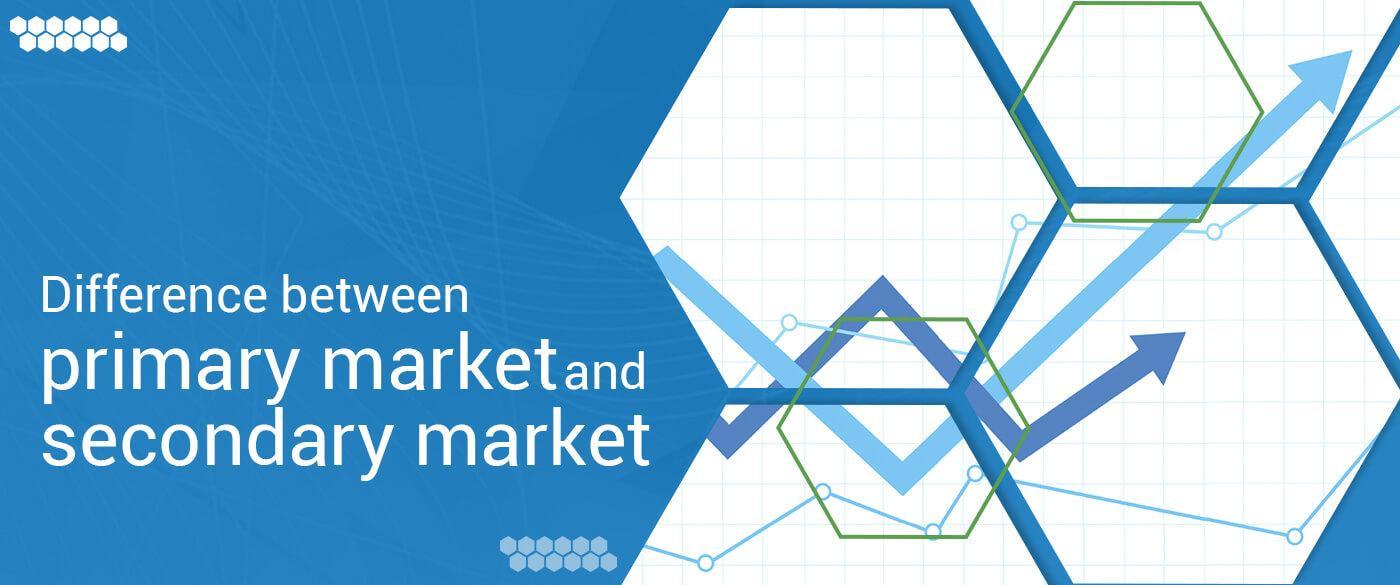Primary and Secondary Market: Understanding the Key Differences
The financial market is a complex and dynamic landscape, comprising various avenues for investors to participate in.
Two primary segments of this market are the "Primary Market" and the "Secondary Market." Understanding the distinctions between these two markets is crucial for any investor seeking to make informed decisions. In this comprehensive guide, we will delve into the differences between theprimary and secondary market, shedding light on their unique characteristics and functionalities.
Primary Market:
The Primary Market, often referred to as the "new issue market," is where companies raise capital by issuing new securities to the public for the first time. It is the initial point of entry for a company seeking to go public and obtain funding from investors. In the Primary Market, securities, such as stocks and bonds, are offered to the public through an Initial Public Offering (IPO) or a Follow-On Public Offering (FPO). These offerings provide investors with an opportunity to buy shares of a company's stock directly from the issuer.
Key Features of the Primary Market:
1. Capital Formation: Companies raise fresh capital to finance business expansion, research, and other strategic initiatives.
2. Direct Issuance: Securities are issued directly by the company to investors, establishing a direct link between the issuer and the investor.
3. Fixed Price or Book Building: IPOs can be priced at a fixed rate or determined through a book-building process, allowing investors to bid for shares.
Secondary Market:
Once securities are issued in the Primary Market and investors have acquired them, these securities can be bought and sold in the Secondary Market. The Secondary Market is a platform where existing securities change hands among investors, and the buying and selling of securities take place on stock exchanges like NSE (National Stock Exchange) and BSE (Bombay Stock Exchange). Unlike the Primary Market,
the Secondary Market does not provide funds directly to the issuing company.
Key Features of the Secondary Market:
1. Liquidity: Investors can easily buy and sell securities, providing liquidity to their investments.
2. Market-driven Pricing: Prices of securities in the Secondary Market fluctuate based on demand and supply, as well as market sentiments.
3. No Involvement of Issuing Company: Trading in the Secondary Market occurs between investors, without any direct involvement from the issuing company.
Differences between the Primary Market and Secondary Market:

1. **Purpose**: The primary purpose of the Primary Market is to raise capital for companies through the issuance of new securities, while the Secondary Market facilitates the trading of existing securities among investors.
2. **Nature of Transactions**: The Primary Market involves direct transactions between the issuing company and the
investors, whereas the Secondary Market involves transactions between investors.
3. **Capital Flow**: In the Primary Market, funds flow from investors to the company issuing the securities, whereas in the Secondary Market, funds flow between investors based on market dynamics.
4. **Role in Capital Market**: The Primary Market plays a vital role in channeling savings into productive investments, enabling companies to raise necessary funds for growth. On the other hand, the Secondary Market provides liquidity to investors and helps in determining the value of securities based on market forces.
In conclusion, both the Primary and Secondary Markets play significant roles in the financial ecosystem. The Primary Market facilitates capital formation for companies, while the Secondary Market provides liquidity to investors and enables them to trade securities efficiently. By understanding the differences between these markets, investors can make well-informed decisions that align with their financial objectives and risk tolerance.
For more in-depth insights on the distinction between the Primary and Secondary Market, visit the original article at https://www.mastertrust.co.in/Blog/difference-between-prim ary-market-and-secondary-market. Happy investing!
